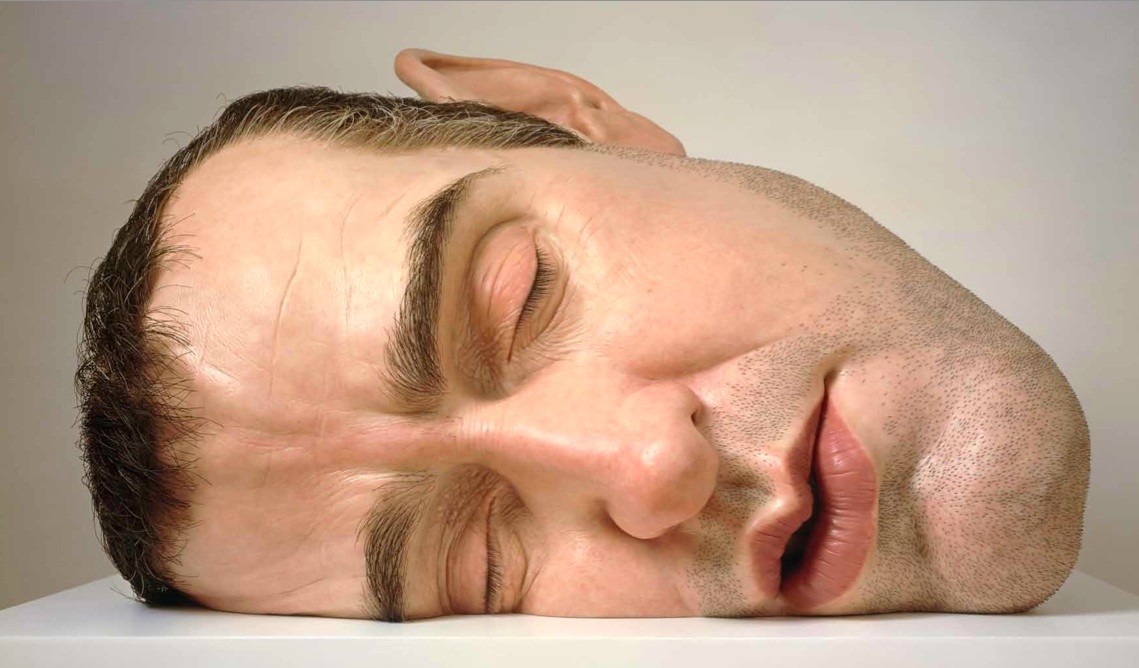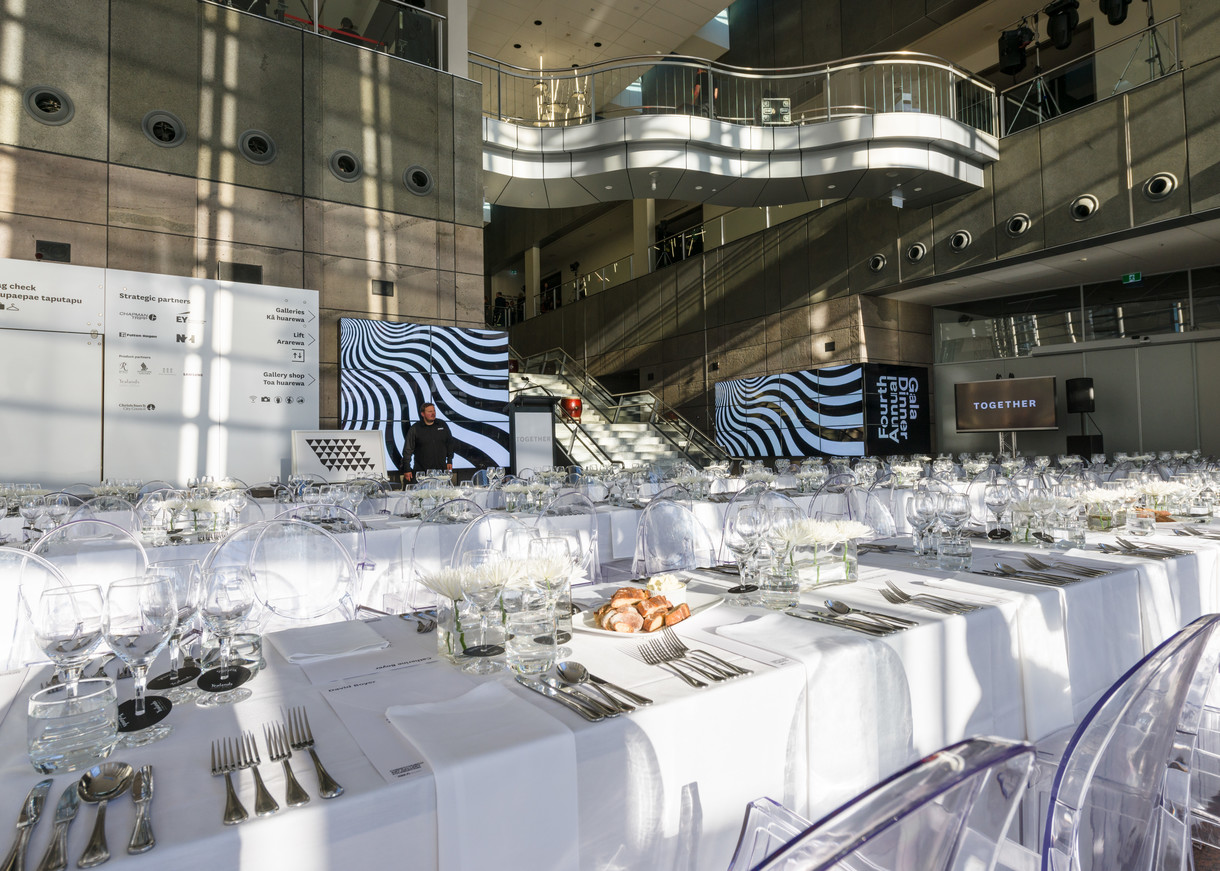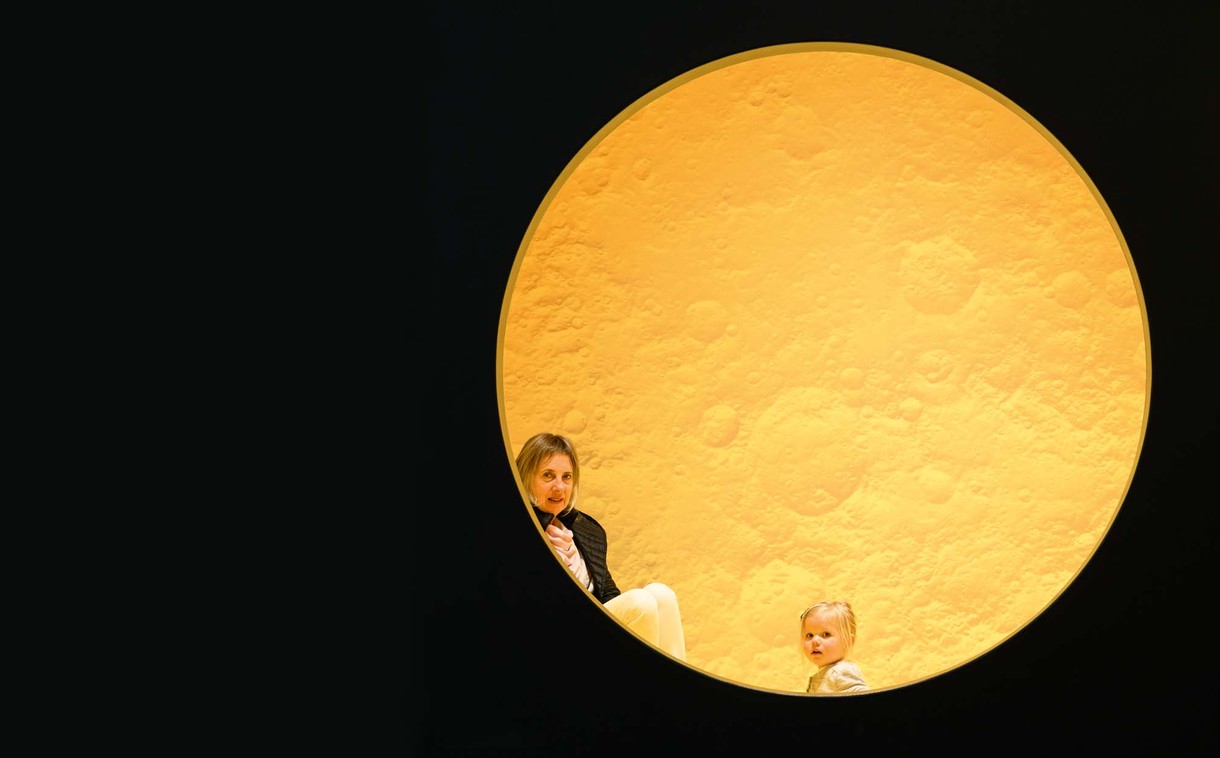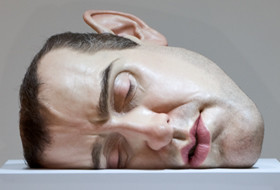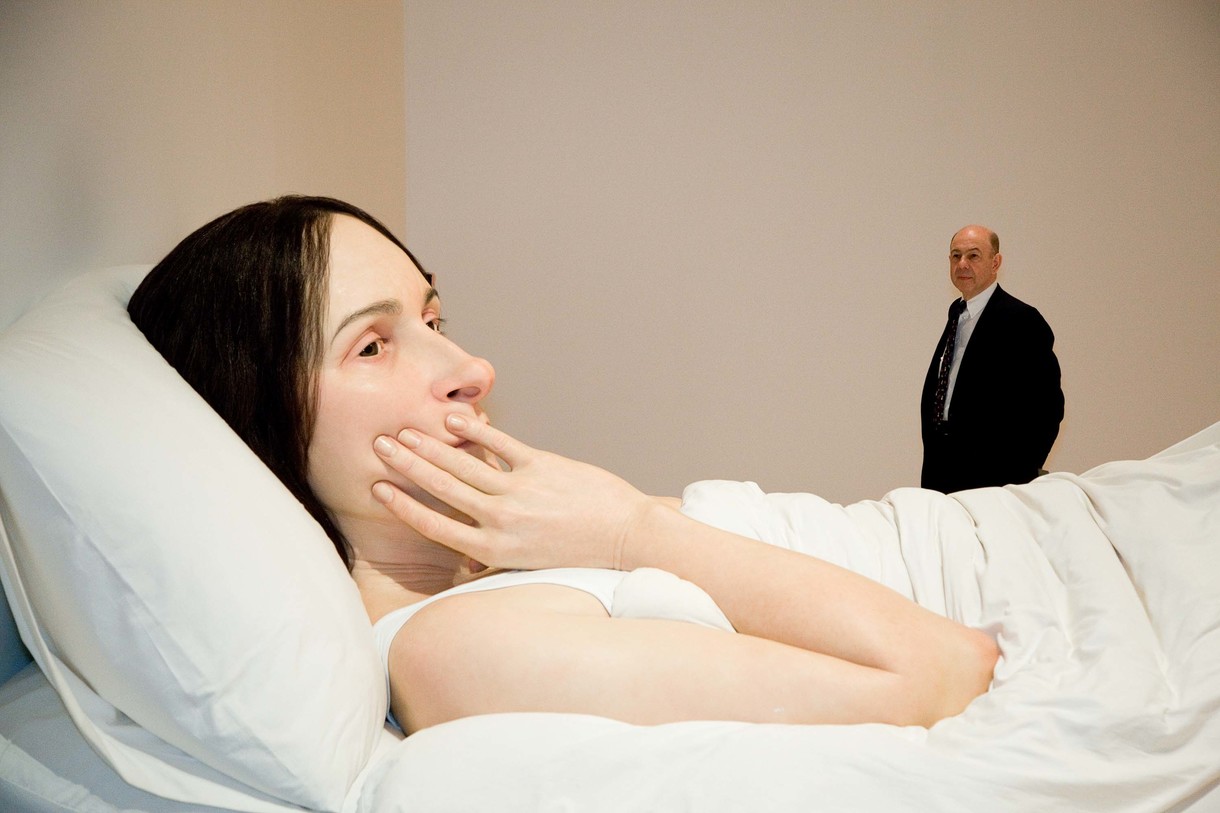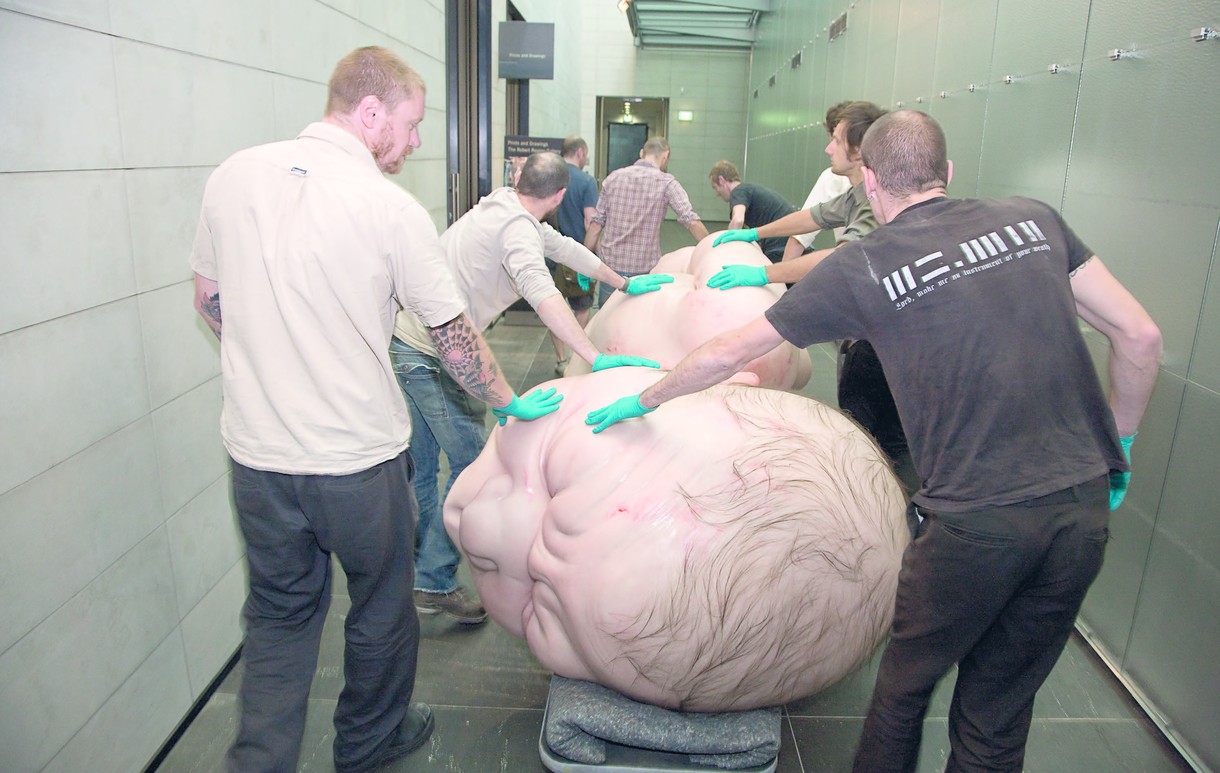The Edge of Life
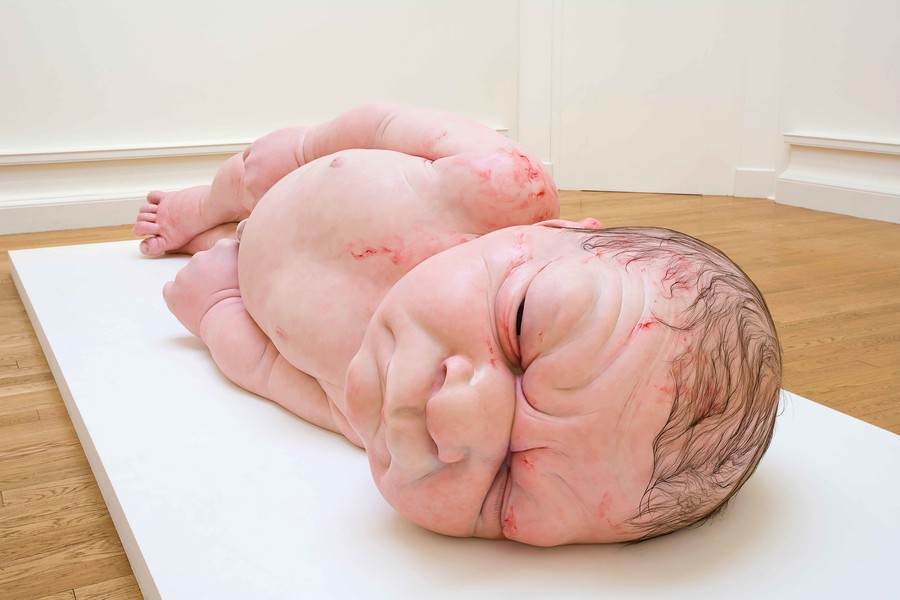
Ron Mueck A girl 2006. Polyester resin, fibreglass, silicone, synthetic hair, synthetic polymer paint, second edition, artist’s proof. Scottish National Gallery of Modern Art, Edinburgh, purchased with assistance from The Art Fund 2007. © Ron Mueck courtesy Anthony d’Offay, London. Photo: Antonia Reeve
When we first saw Ron Mueck’s sculpture of A girl, my companion bent down. She stood back startled. ‘I thought I heard her cry,’ she said. Later she wept over what she had seen. Being moved so deeply was not a response to the shock of the artisanship which created such uncannily life-like figures. Rather it was to do with a different kind of shock – that of recognition of the depiction of an interior emotional world. She felt she might just have had an encounter with the human soul.
To understand what is truly original in Mueck’s work one has to see what he draws on but transcends. His sculptures Pregnant woman and Mother and child clarify the ways traditional representations of the Madonna involved a kind of erasure. The Madonna has been a strangely sexless, disembodied creature. The body is composed, clothed, limbs gracefully arranged to keep anything of nature’s harsh fingerprint on the body hidden and concealed. The gaze in such portraits is turned outwards, displaying self-consciousness of the Other, observing being observed. The face is so often turned, not towards the baby as the mother’s gaze actually is in real life, but towards the male viewer. In these iconic images there is sentimentality, and a disembodied ethereality, a fiction about motherhood not grounded in the truth of the raw, visceral, confronting yet profoundly moving bodily experience which is pregnancy and birth. Not just Immaculate Conception, but Immaculate Birth.
And yet… those traditional portrayals were trying to capture something true, of the sacred in the maternal, the awe at the creativity of giving birth, and the profound meaning of new life, the sense of revelation in encountering a new human being. That sense of the sacred embedded in those portraits could not be more different from the postmodern emotions of fractured ambivalence, even hostility, so often expressed towards motherhood. The maternal experience is presented as a lack, a loss of what is truly valued: the desired identity of professional worker, so eagerly and quickly returned to. That ambivalence is also shown by our uneasiness over a mother breastfeeding her baby in public. Despite our visual world being saturated with the ubiquitous images and display of women’s breasts in a sexual context – ‘the porno-ization of our culture,’ Ariel Levy called it – a suckling baby frequently results in an ugly sensation.
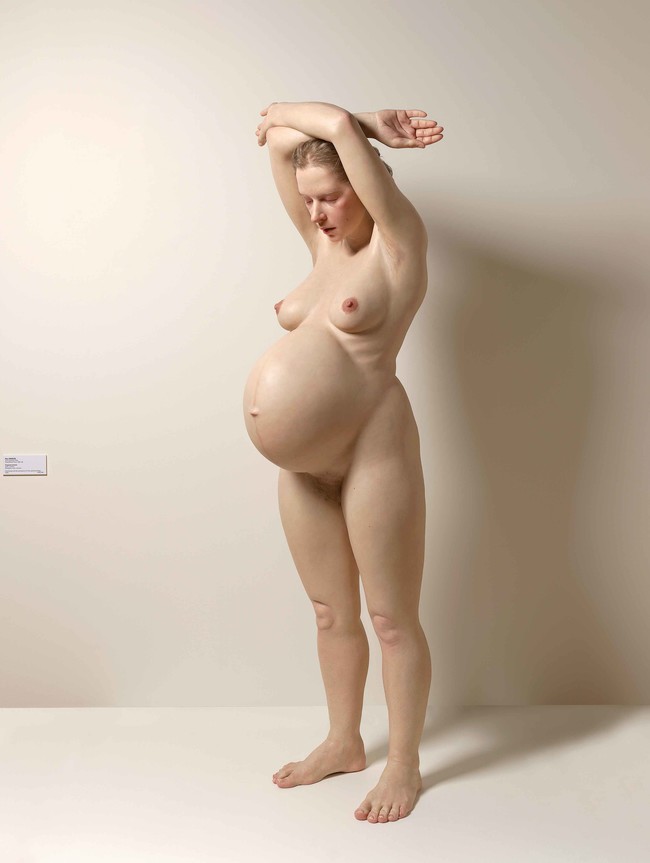
Ron Mueck Pregnant woman (detail) 2002. Polyester resin, fibreglass, silicone, aluminium, synthetic hair, ed. 1/1. National Gallery of Australia, Canberra, purchased with the assistance of Tony and Carol Berg 2003. © Ron Mueck courtesy Anthony d’Offay, London
How radically different an achievement from both these strands – of worship and ambivalence – are Mueck’s sculptures Pregnant woman, Mother and child and A girl. They are genuinely something very new. They have resonances with those older iconic images, but transcend the disembodied and sanctifying sentimentality. He also steps past, seemingly without glancing at, the muddled sensibility and ambivalence at the heart of contemporary thinking about the maternal experience, born of postmodernity’s unbearable lightness of being. Mueck’s sculptures reveal, with a shocking power, just what is erased in both those visions.
Mueck’s inventive play with scale works to convey meaning. This is seen in the smallness of the father after death in Dead Dad, and the huge size of the baby in A girl, which confronts us with the disparity between the tiny form of the newborn and the enormity of the presence that so transforms the family. Likewise, Pregnant woman defies the monumental in scale, looming above us, stark naked. Yet it also has a strange tenderness; there is an intimacy in Mueck’s sculpture showing her vulnerable humanity in every detail – pulsing veins and beads of sweat, bodily hair and swollen ankles. Her mouth is open, lips parted. Stay silent in front of the sculpture for a moment and you can hear her breathe. We see here not a fragile femininity, but instead a womanliness of great strength, as we see the felicity of nature’s design in her pelvic structure, a perfect scaffolding supporting her enormous belly. Yet that strength is not sentimentalised either, because of the expression on the woman’s face.
The expressions on Mueck’s sculptures are perhaps the most remarkable aspect of his work. In A girl for example, the baby’s face shows both the shock and tension of birth, underscored by the clenched fists at her side. Yet, it is more complex than this, for remarkably enough there is also evident just a trace of a much older self, of the person this baby will become. Pregnant woman is no different. There is a powerful sense of interior life in the sculptures, their feeling and emotional world. In Pregnant woman, the face is strained, effortful, mindful, eyes closed, concentrating on the baby within, seemingly preparing herself for the new person she is about to meet. It has physical suffering in it, and exhaustion, yet if one stops and suddenly glances back over one’s shoulder, there is more than the ghost of the relaxation after sex in the face, perhaps the sex that created this baby. Glance again and one sees a face that has loved, and will love this baby, and in that love we see the traces of a soul. It is perhaps that ability to render so expressively the feeling world of his subjects, that led the cultural critic Marina Warner to remark that ‘his work often extends into the idea of love itself, which is a hard subject in our tarnished times’ and that he takes us ‘to the edge of life’.
If the embodied reality of pregnancy is so raw and present in this sculpture, it coexists with something else; the depth of the emotional transition as a woman turns inward, towards the life within, preparing herself for the effort of birth and nurturing the child she bears into the world. It is that delicate coexistence of elements which makes it so deeply moving. As with other of Mueck’s sculptures dealing with the profound intensity of birth, life, and death, we are taken closer to a sense of the sacred, while simultaneously confronted with our own messy humanity. The edge of life indeed.









